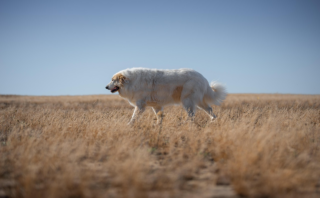Easy Dog Training Guide: 10 Simple Steps for Kids
Training a dog is an educational and rewarding experience for both children and adults. For kids, it offers an opportunity to exercise responsibility and develop empathy. More importantly, dog training strengthens the bond between the child and the pet, fostering mutual understanding and respect. With the right approach, children can learn to train their dogs effectively and safely. Here’s a guide on how to go about it.
Understanding Dogs
Understanding a dog’s behavior is the first step to effective training

A dog’s body language can also give away a lot about what it’s feeling. Ears held back, wide eyes, and a stiff tail are all signs of stress or anxiety. On the flip side, a wagging tail, relaxed body, and bright eyes indicate a happy and content dog. Teaching kids to interpret these signs can help them communicate better with their pets, leading to more effective training and a stronger bond.
Basic Training Commands
Sit
The ‘sit’ command is one of the simplest and most useful dog training commands. To train a dog to sit, hold a treat close to its nose, then move your hand up, allowing its head to follow the treat and causing its bottom to lower. Once the dog is in the sitting position, say ‘sit’, give the treat, and share affection.
Come
This command could help keep a dog out of trouble or bring it back to you if it gets lost. To train your dog to ‘come’, put a leash and collar on your dog. Go down to its level and say ‘come’ while gently pulling on the leash.
Stay
The ‘stay’ command is perhaps among the more challenging for a dog to master, especially for puppies full of energy. But for a child, with easily noticeable enthusiasm and a handful of treats, this can become a favourite exercise between the pet and the kid.
Tips for Kids
Consistency is Key
In dog training, it’s important to be consistent

Patience is Virtue
Remember that dog training isn’t about immediate results. Sometimes, the dog might not obey quickly, and it’s okay. Teach your kid to take this as a learning process where they need to be patient and persistent.
Frequently Asked Questions
How old should the dog be to start training?
Training can begin as soon as your puppy arrives home, usually around eight weeks old. However, remember to keep sessions short and fun, because puppies have short attention spans.
What if my dog isn’t listening to my child?
If a dog isn’t listening, it may be because the child’s command is not clear or the dog hasn’t learned to associate the command with the expected action. Try using treats and rewards to motivate the dog.
Can any breed be trained?
Yes, any breed can be trained. However, the success of the training depends largely on the dog’s temperament and the consistency of the training.
How long should training sessions last?
For young puppies, sessions should be short but frequent, about 5 minutes long but multiple times a day. For older dogs, sessions can be a little longer.
Conclusion
In conclusion, dog training is an excellent way for children to grow. It instills vital qualities such as patience, consistency, and empathy while also creating a strong bond between them and their pet. The key to successful dog training is understanding a dog’s behaviour, being consistent, and having a lot of patience. Happy training!



